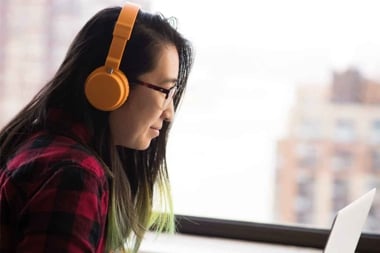Are You Mal-Illuminated?
Overfed and undernourished'we call this malnutrition. Recently a new term has been coined: 'mal-illumination.'#157; This is not used when one doesn't get to see light, or when things remain dark. Not at all. Mal-illumination is a condition we all seem to suffer from in one way or another when we do not get enough exposure to sunlight..
Overfed and undernourished we call this malnutrition. Recently a new term has been coined: "mal-illumination." This is not used when one doesn't get to see light, or when things remain dark. Not at all. Mal-illumination is a condition we all seem to suffer from in one way or another when we do not get enough exposure to sunlight.
Before the invention of the light bulb, people spent most waking and working hours outside in full sunlight. This has changed dramatically. With artificial light available 24 hours a day, most of our activities have moved from a sunlit to an artificially lit environment. We now not only spend most of our lifetime inside, but also under the wrong light conditions. Years of research have concluded that people depend on the full spectrum of the sun's rays from ultraviolet to infrared, with the rainbow colours violet, indigo, blue, green, yellow, orange and red for optimal health.
What Can Light Do for Us?
On a sunny day in summer, our bodies produce 50 times more vitamin D than on dark winter days. Vitamin D prevents cancer and the leaching of calcium from teeth (resulting in cavities) and bones (a contributor to osteoporosis). Light lowers blood pressure and cholesterol levels, increases heart performance, regulates blood lipids, helps eliminate toxins, repairs genetic damage and does lots more to keep us healthy. We all know light has a direct effect on the psyche. Shortness of light can cause depression.
No life can exist without natural sunshine. Each spring, we feel the joy and energy that longer sun-filled days bring. All of nature wakes up to the added benefit of more natural light. Despite this, for at least eight hours a day, most of us work under lights we would never consider putting in our homes, let alone find in nature. As a result, we suffer from healthy light destitution, which manifests as many forms of ill health. Headaches, eyestrain and foggy thinking symptoms commonly attributed to stress or fatigue can actually be the result of antiquated fluorescent lighting still being used in 99 percent of offices and schools nearly 75 years after its invention. Despite overwhelming scientific evidence that fluorescent light tubes are harmful to human health, they are sold in stores and building supply centres. Research in schools has shown that cool white fluorescent bulbs can cause bodily stress, anxiety, hyperactivity, attention problems and other distress, leading to poor learning performance.
Mal-illumination is a condition we all seem to suffer from in one way or another when we do not get enough exposure to sunlight.
Why Full Spectrum Light?
The fact that the majority of the world's population now works indoors has created a need for a new form of healthy lighting that resembles the full spectrum light of the sun. In schools, classrooms and work environments with simulated sunlight (full spectrum lighting), people experience less stress and anxiety, improved behaviour and attitudes, better health and attendance, and increased performance and academic achievement. Several studies in the United States and by the Alberta government have proven that students absorb calcium much better with the presence of ultraviolet rays provided by full spectrum lighting. Dental cavities were also reduced significantly.
Dr. Jacob Liberman calls light "the medicine of the future." The best thing we can do to improve our health other than ensuring proper whole foods nutrition and adequate exercise is spend more time in the sunshine to avoid mal-illumination.




